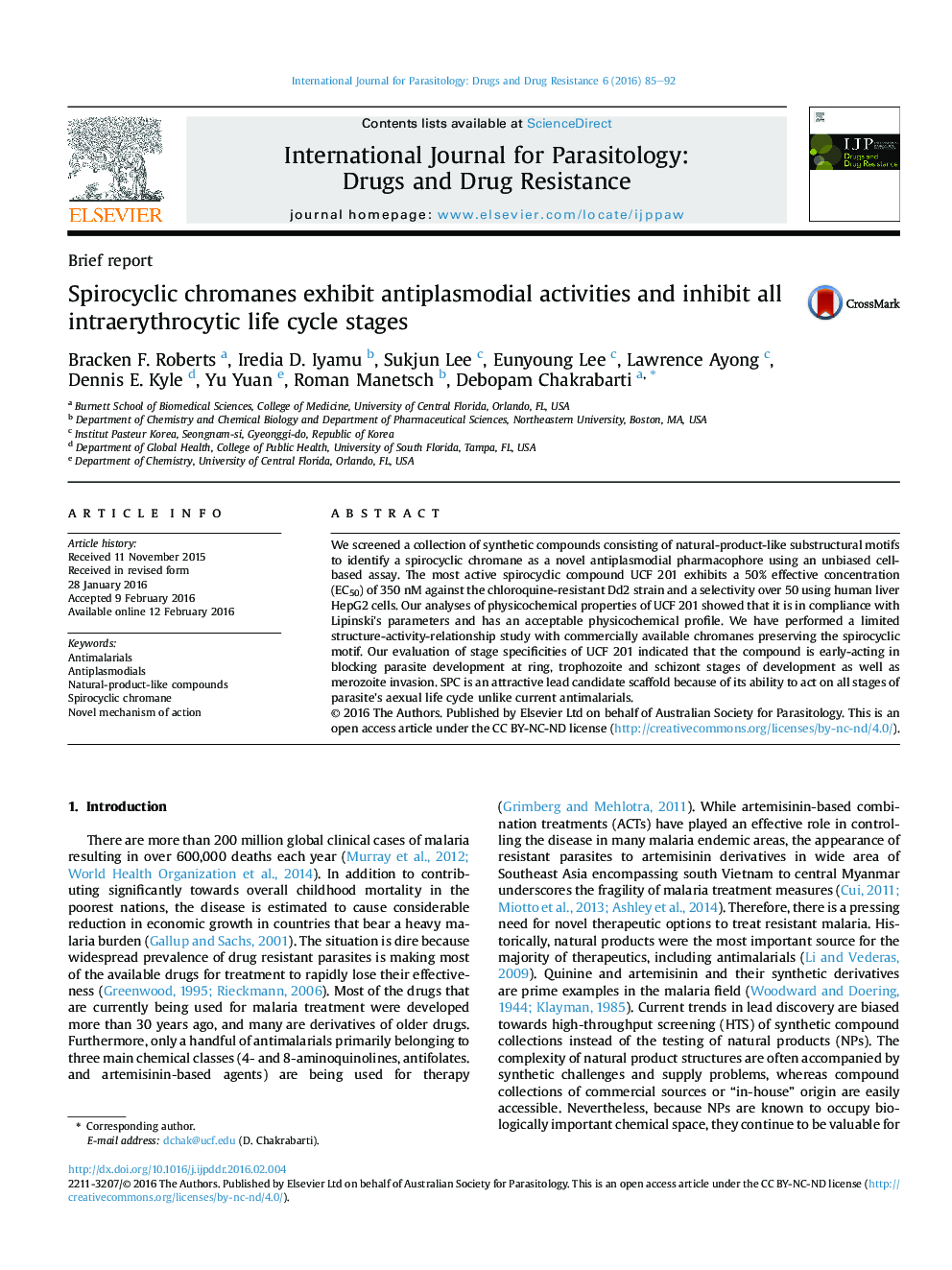| Article ID | Journal | Published Year | Pages | File Type |
|---|---|---|---|---|
| 2055131 | International Journal for Parasitology: Drugs and Drug Resistance | 2016 | 8 Pages |
•SPC is a novel antiplasmodial scaffold.•SPC has an EC50 of 350 nM against chloroquine-resistant parasite and is selective.•SPC inhibits all stages of parasite growth in erythrocytes.
We screened a collection of synthetic compounds consisting of natural-product-like substructural motifs to identify a spirocyclic chromane as a novel antiplasmodial pharmacophore using an unbiased cell-based assay. The most active spirocyclic compound UCF 201 exhibits a 50% effective concentration (EC50) of 350 nM against the chloroquine-resistant Dd2 strain and a selectivity over 50 using human liver HepG2 cells. Our analyses of physicochemical properties of UCF 201 showed that it is in compliance with Lipinski's parameters and has an acceptable physicochemical profile. We have performed a limited structure-activity-relationship study with commercially available chromanes preserving the spirocyclic motif. Our evaluation of stage specificities of UCF 201 indicated that the compound is early-acting in blocking parasite development at ring, trophozoite and schizont stages of development as well as merozoite invasion. SPC is an attractive lead candidate scaffold because of its ability to act on all stages of parasite's aexual life cycle unlike current antimalarials.
Graphical abstractFigure optionsDownload full-size imageDownload as PowerPoint slide
